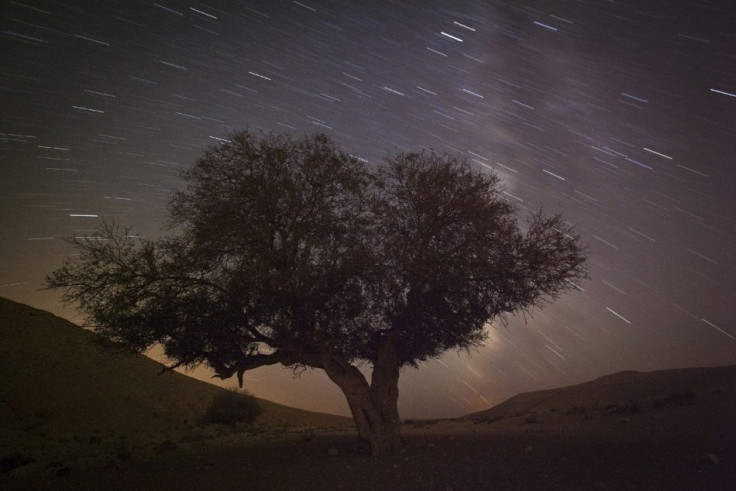New Camelopardalids Meteor Shower Tonight: Shooting Star Outburst Predicted at Peak

A new meteor shower called May Camelopardalids is anticipated to happen for the first time on the night of 23 May through the wee hours of the next morning.
The Camelopardalids meteor shower would result when Earth directly crosses the path of dust from a recently discovered periodic comet, 209P/LINEAR.
Discovered in 2004, Comet 209P/LINEAR ejected streams of dust in the 1800s and the leftover dust will now cross Earth's orbit approximately 200 years later, an event which scientists assume could result in a significant meteor outburst.
"Some forecasters have predicted a meteor storm of more than 200 meteors per hour," Nasa meteor expert Bill Cooke said in a statement.
"We have no idea what the comet was doing in the 1800s. The parent comet doesn't appear to be very active now, so there could be a great show, or there could be little activity," he added.
The meteor shower, which is expected to appear from the northern constellation Camelopardalis, would be visible across North America and will be active between 10.30 pm on 23 May and 7am ET.
According to scientists at Nasa's Marshall Space Flight Center in Huntsville, Alabama, it will reach its peak between 2am and 4am ET on 24 May. Scientists predict that the new meteor shower may burst into a meteor storm during the peak hours.
No threat to Earth
Scientists have ruled out the possibility of any danger to Earth due to the meteor storm as the particles in this comet's dust trail are as small as grains of sand, which will burn up as soon as they hit Earth's atmosphere.
"What's really nice about this particular comet [209P/Linear] is that we're going right smack in the middle of these dust trails and the meteors are going to be pretty slow," astronomer Carl Hergenrother, a scientist at the University of Arizona, said.
"They're actually going to last maybe for a second or two. It's going to look almost like slow moving fireworks instead of the usual shooting stars that we're used to."
He added: "Right before your eyes you're seeing a grain of dust that was released from a comet hundreds of years ago that resided in that comet for billions of years."
"It may have even existed before the Earth existed, and there it is burning up right in front of you. So you're watching a billions of years journey end right in front of your eyes."
Though scientists are unsure about how many shooting stars might be visible, they believe the May Camelopardalids meteor shower could put on a show at a "dazzling one-per-minute rate."
If a meteor storm forecast turns true, the Camelopardalids shower would possibly rival the Perseid meteor shower in August that usually produces over 100 shooting stars during peak hours and is visible across most parts of the world.
© Copyright IBTimes 2025. All rights reserved.






















